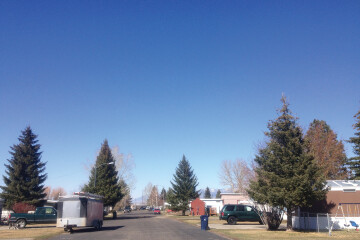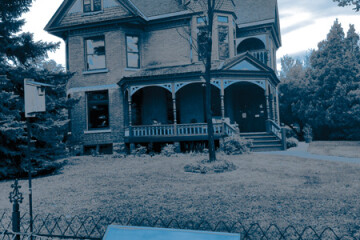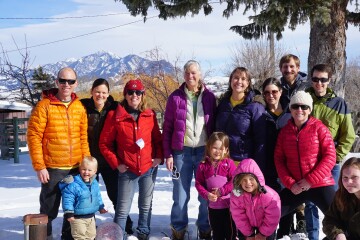Bozeman's Cohousing Community
As I was driving to meet with Bozeman Cohousing Community cofounder Mark Owkes at the Daily Cafe on a quiet Sunday morning in February, I was secretly hoping to encounter a spiritual teacher. Or at the very least, a representative of a group loosely based on the Netflix documentary Wild Wild Country. After all, in this individualistic culture of vast and largely empty houses, anything involving the words “communal living” can conjure images of fringe beliefs, bunkers, erratic dancing, and incense. And while that’s exactly what I was hoping for, what I encountered was something more grounded, inspiring, and real.
I could immediately tell that Mark was an intelligent, friendly, and reliable guy. From his handshake alone, I knew that he believes the earth is round, that dinosaurs existed, and that knowing his neighbors is worthwhile. And when I found out that he’s a professor of mechanical engineering at Montana State University, my final hopes for accidentally stumbling upon an anarchic cult were dashed. Instead of enlightenment, Mark offered me a comprehensive overview of what cohousing is and why he is motivated to log long hours getting Montana’s first cohousing community off the ground.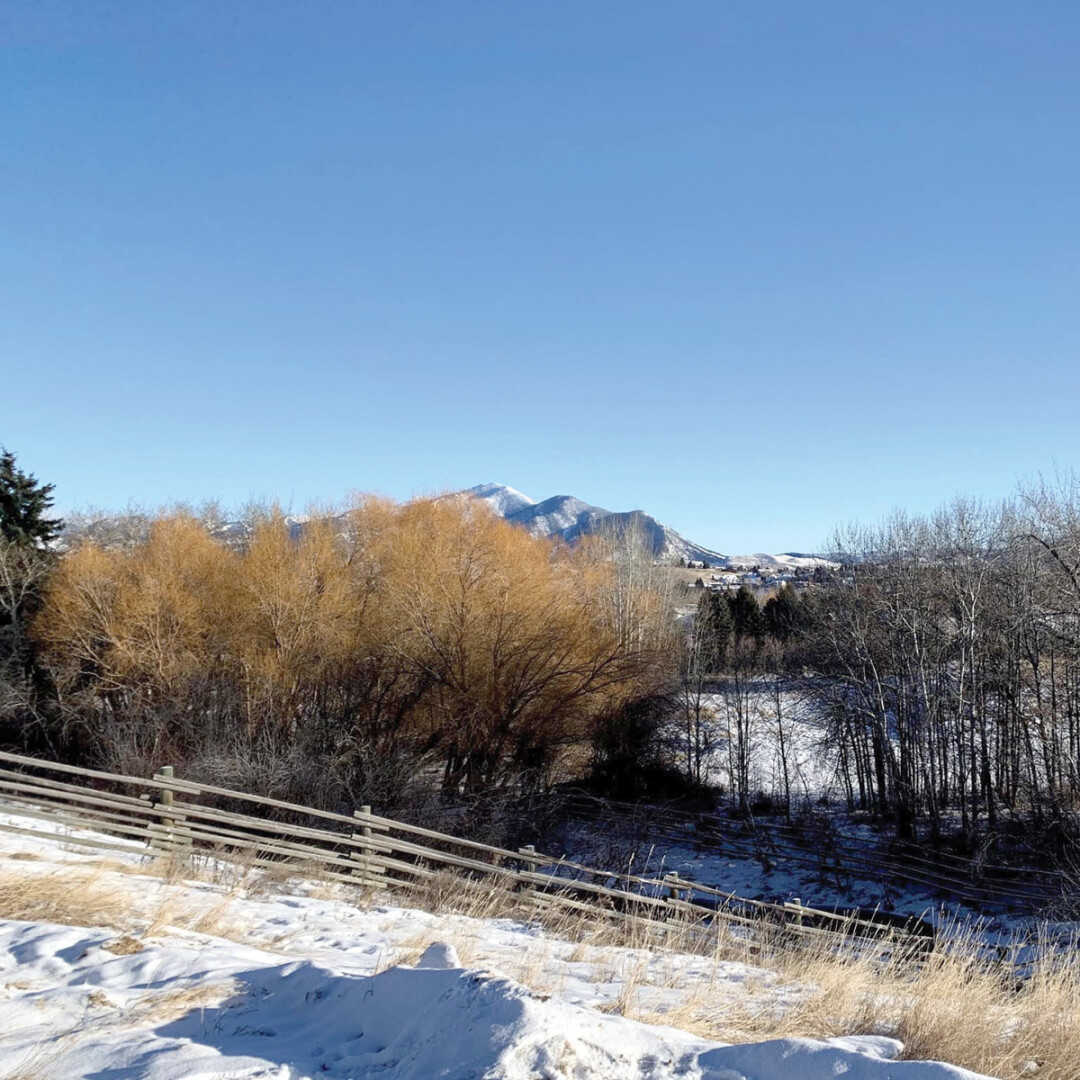
“In a lot of ways,” said Mark through a wry smile, “we’re not creating anything new here. We’re just going back to maybe how it was in smaller villages where you know the people you’re living with, and you’re there to help each other. Right now, if we need something, we just go out and buy it. In the past, if you needed something, you checked with all your friends to see if they had it, and if they didn’t, you built it. So, it’s that kind of culture of knowing who’s around us that we want to bring back.”
According to the Bozeman Cohousing website, cohousing “is an intentionally planned community of smaller private homes and a large community house. The homes provide private space. The community house is where families gather and spend time together...cohousing encourages a culture of sharing and interaction with a balance of privacy…”
“Gathering, spending time together, sharing, interaction”...in other words, connection. As we move deeper into the 21st century, this evolutionary advantage becomes increasingly rare as technology and busy lives drive a loneliness epidemic. In recognizing the painful symptoms of this contemporary isolation in their lives, Mark and his wife Kathleen started looking into other options.
“Last winter when my family was holed up in our home, feeling isolated by the end of the winter, my wife found a cohousing community in Oregon and said ‘hey let’s go there...but we didn’t want to start all over,” Mark said, pausing to think.
“Right now, our kids can’t walk out our front door and go find other kids. We have to schedule playdates and drive across town to spend time with our friends...this is more like intentionally creating something where the people living there have expressed the desire for more community in their lives.”
As I sat with Mark and considered what he was saying, I remembered stories my grandparents told me when I was a kid; tales about neighborhood picnics, borrowing flour and sugar and wrenches, helping each other dig out trucks in winter storms. Thinking about this made me sad as I realized the cultural absence of this interdependence in my own life.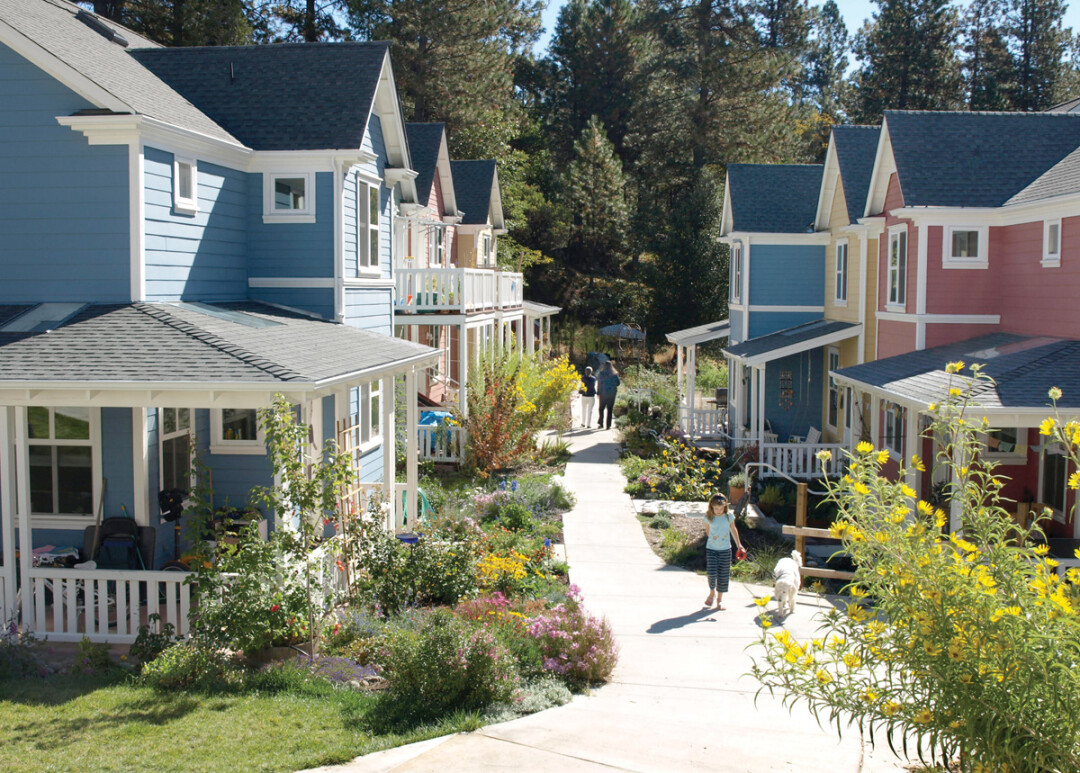
It seems that Cohousing is an age-old solution to a contemporary problem - or rather, a rising tide of contemporary problems. In talking to Mark and doing further research, I discovered that the primary reasons many people choose cohousing are loneliness and the lack of community. Another reason for the current rise of cohousing - which has been around since 1972 - can be attributed to the growing awareness of climate and the need to scale down our living practices if our species is to continue existing on Earth.
“Building sustainably, having well-built homes, having a large garden to grow food, having some animals, doing solar panels, reducing our impact through smaller homes, I think cohousing promotes lifestyles that mesh with those [sustainable] ideas,” Mark said. And while a shared intention toward environmental living is common in cohousing philosophy, there is no single belief system or worldview required for getting involved.
According to Mark, the Bozeman Cohousing Community “has a diverse group of people composed of professors, business owners, families, retirees, etc from here in Bozeman.
Cohousing isn’t centered around a worldview. It’s centered around the goal of people wanting more community. Typically, sustainability comes with that. Living in smaller homes, having more of a shared culture so you don’t have to buy everything, but we’re not all Democrat, all Republican, all Catholic…”
I’m amazed that using such a simple orientation, the Bozeman Cohousing Community formed and organized a cohesive community in just over a year. Especially now, where it seems like political fervor is the only organizing principle. As of February 20th, 2020, the land where the community will exist was purchased, the design process has begun with our architect, and the group is on schedule to begin building in the Spring of 2021. That’s an impressive victory considering the legal and organizational challenges of launching something that’s never been done in the state. In theory, the success of the Bozeman Cohousing Community will clear the path for others who want to create other cohousing initiatives.
“This is the first cohousing community in Montana, so the legal process has taken some extra work,” said Mark, “but we’re hopefully paving the way for other communities, as well as Bozeman. We’ve had a lot of support for this project and we could definitely see other people creating other communities here in Bozeman.”
As I started to grasp the dynamics of how it might look, how cohousing is basically an environmentally and aesthetically conscious neighborhood with the intention for meaningful human connection, I started wondering about the practicalities. What about arguments, what about decisions, what about those days when someone doesn’t pick up their dog’s poop? Is the poop everybody’s poop? Mark, smiling, was ready to assuage my anxieties.
“It’s consensus-based decision making, which takes effort, but the goal is to foster community and by doing that, everyone’s voice is heard, and we work together to find solutions. That doesn’t mean just saying “no, I don’t like that idea,” instead you say ‘no, I don’t like that idea, I think we should do this,’ And have more of a discussion until everyone is satisfied.”
I was confused and wondering whether humans can actually live this way, so I researched further. One website clarified the benefits of consensus-based decision making this way:
“Using consensus gives us a taste of how things could be done differently. It aims to dismantle all kinds of hierarchy and replace it with shared power. It is based on the values of equality, freedom, co-operation, and respect for everyone’s needs...Consensus involves looking for ‘win-win’ solutions that are acceptable to all. It is neither compromise nor unanimity – it aims to go further by weaving together everyone’s best ideas and key concerns – a process that often results in surprising and creative solutions, inspiring both the individual and the group as whole.”
As my conversation with Mark wound down and I felt the excitement of new possibility- or the coffee - rumbling in my belly, I asked about spaces and whether it was still possible to get involved. Mark nodded enthusiastically.
“We’re definitely looking for more people - there’s benefits to getting in earlier. You can have a say in the design, there’s some financial benefits, you can also secure your home. At some point it will fill up, so the sooner you can get in the better.”
I pressed him again, questioning about the qualities they are looking for in people who join.
“It’s open to everybody. We’re not discriminating. But we are hoping for people that agree with the values of the group; wanting community, wanting to put in a little effort to make that happen, community workdays, cooking community dinners, using whatever skills you have and sharing them. If you’re good with kids, if you want to help caretake, all of that is welcome. So far everyone in the group has been doing a lot and helping out.”
As I come to the end of this article and reflect on all the details I included, I recognize it may sound complicated. It seems like there’s special words and concepts and legal processes. But really, I think it’s actually quite simple. In Mark’s final words, “We’re just people that want a little more community and a little more intentional design.”

